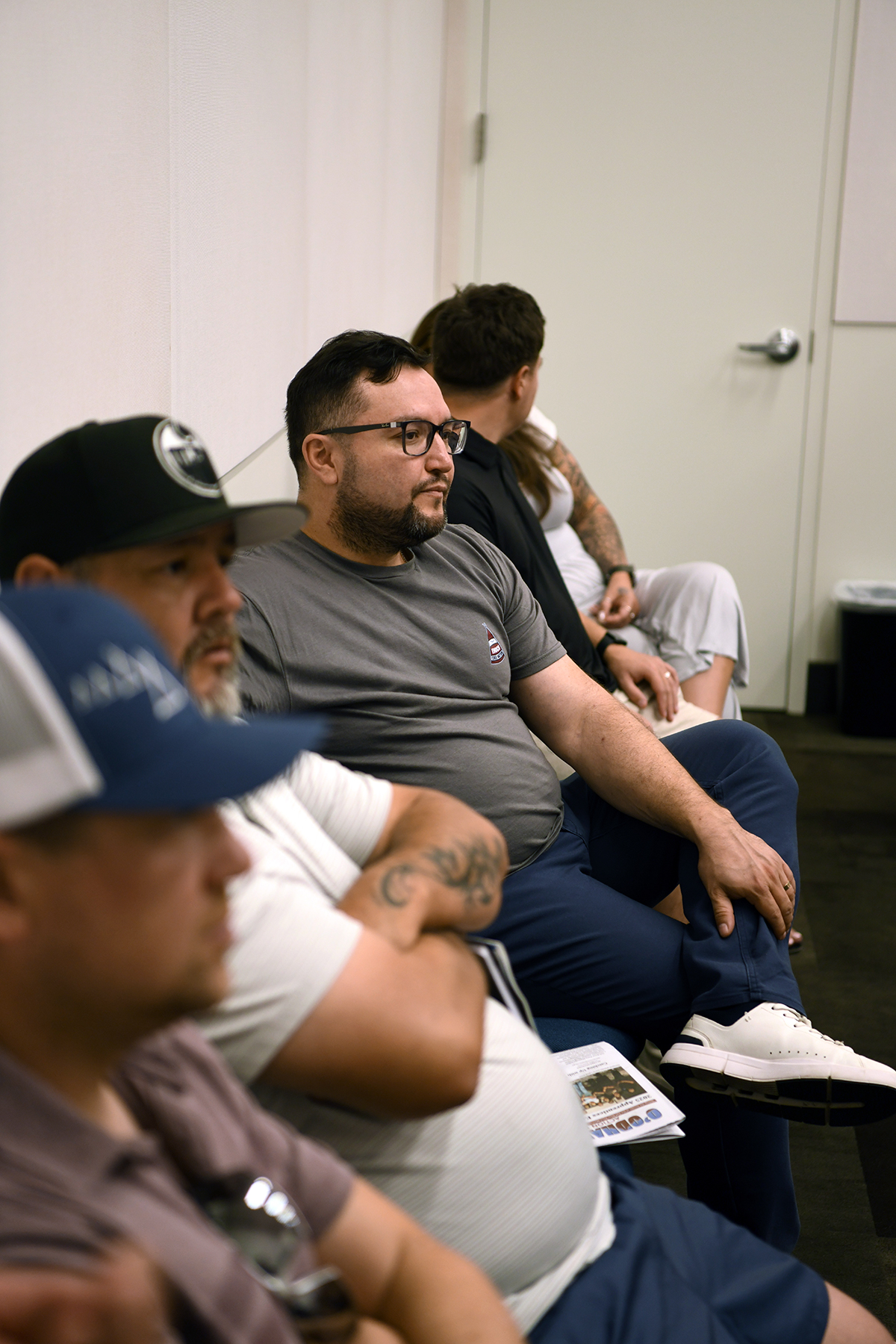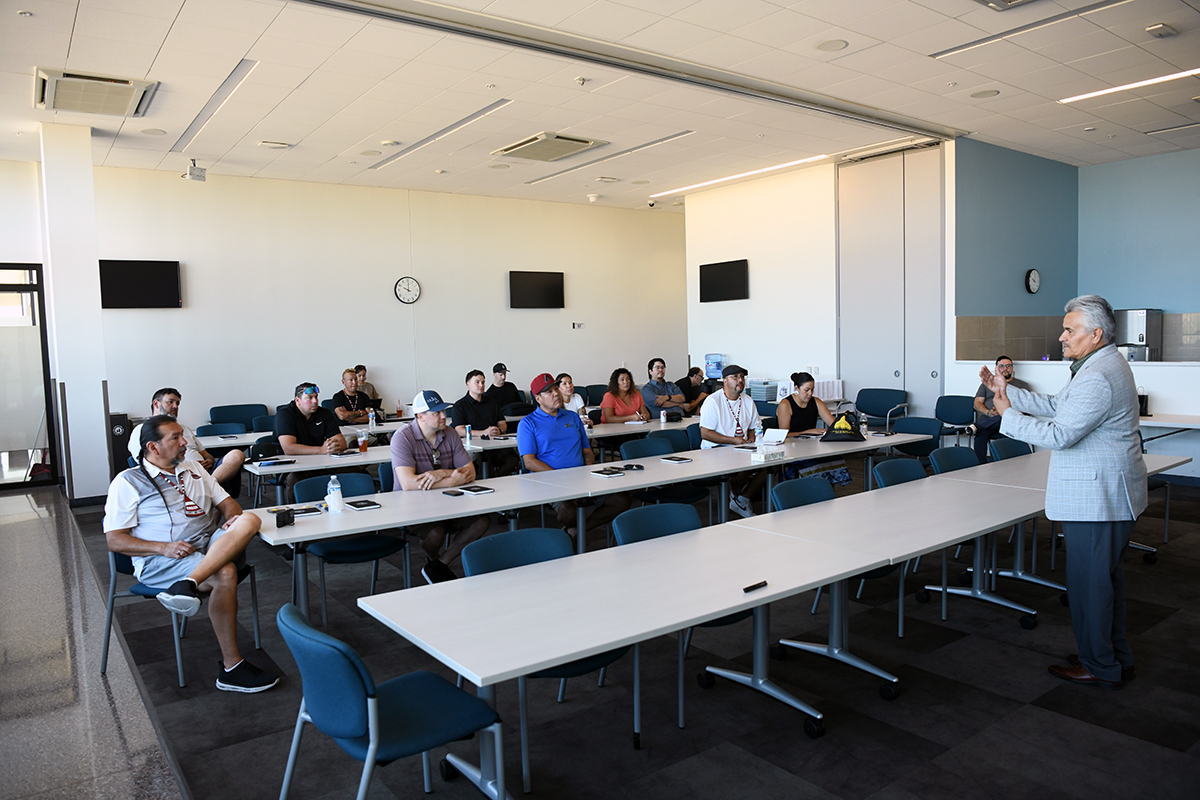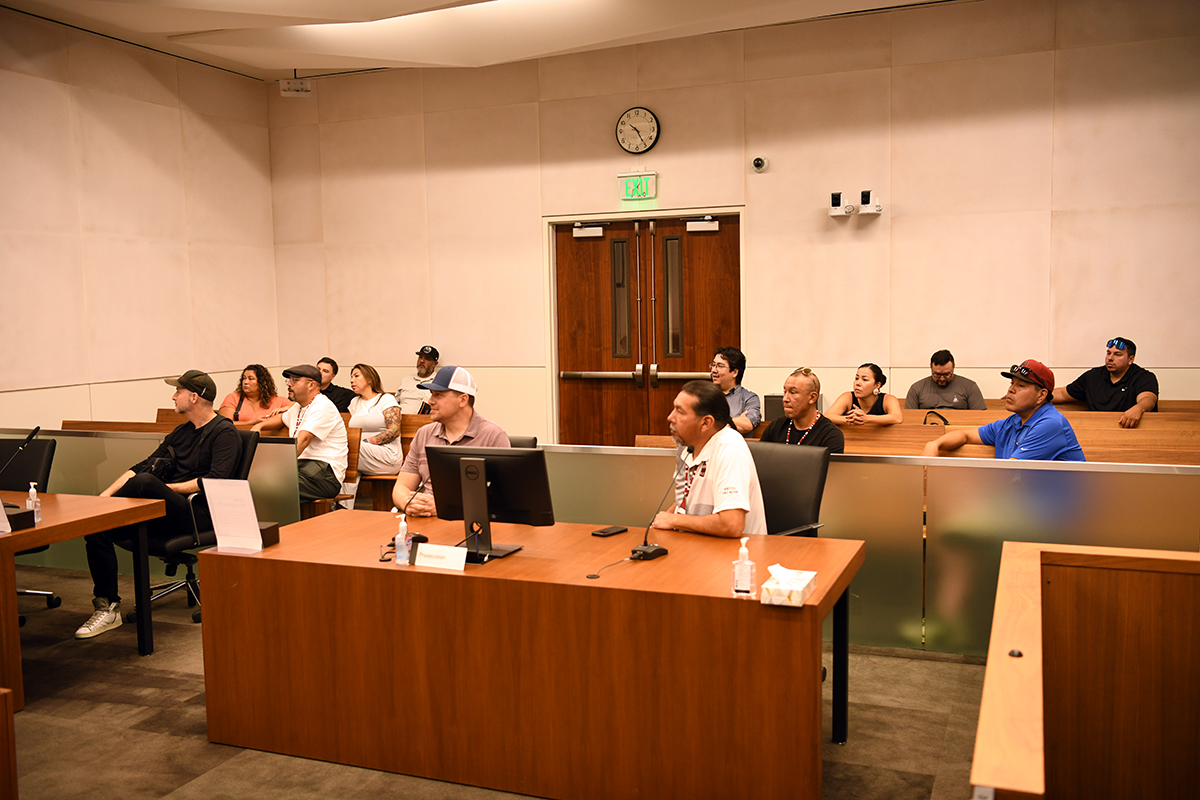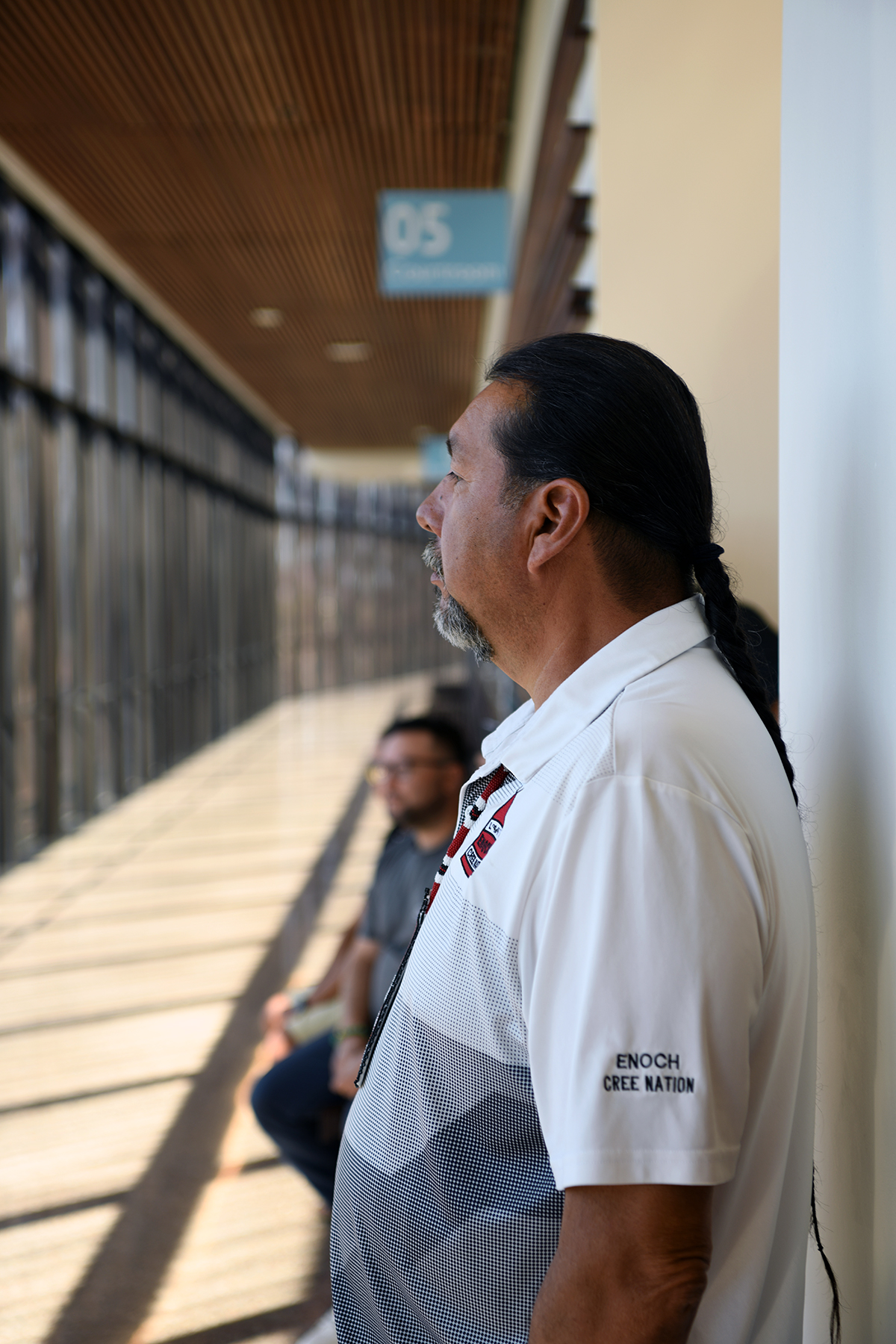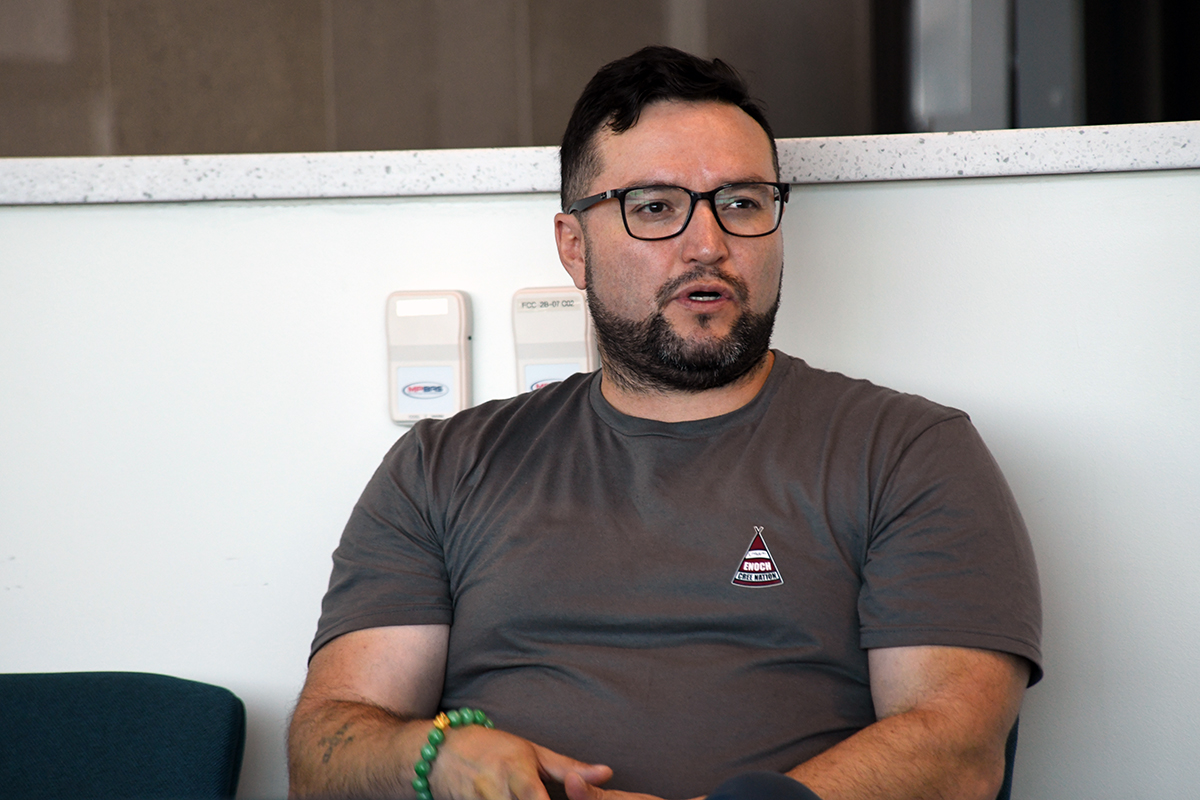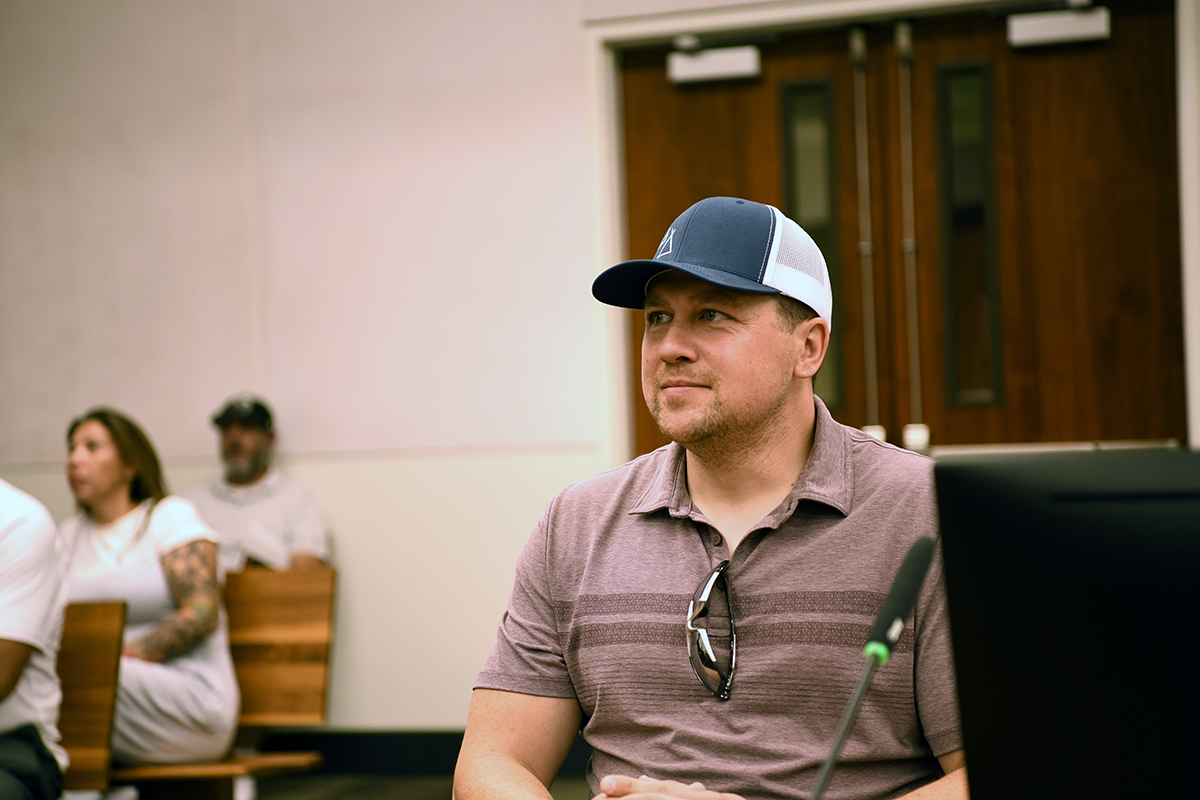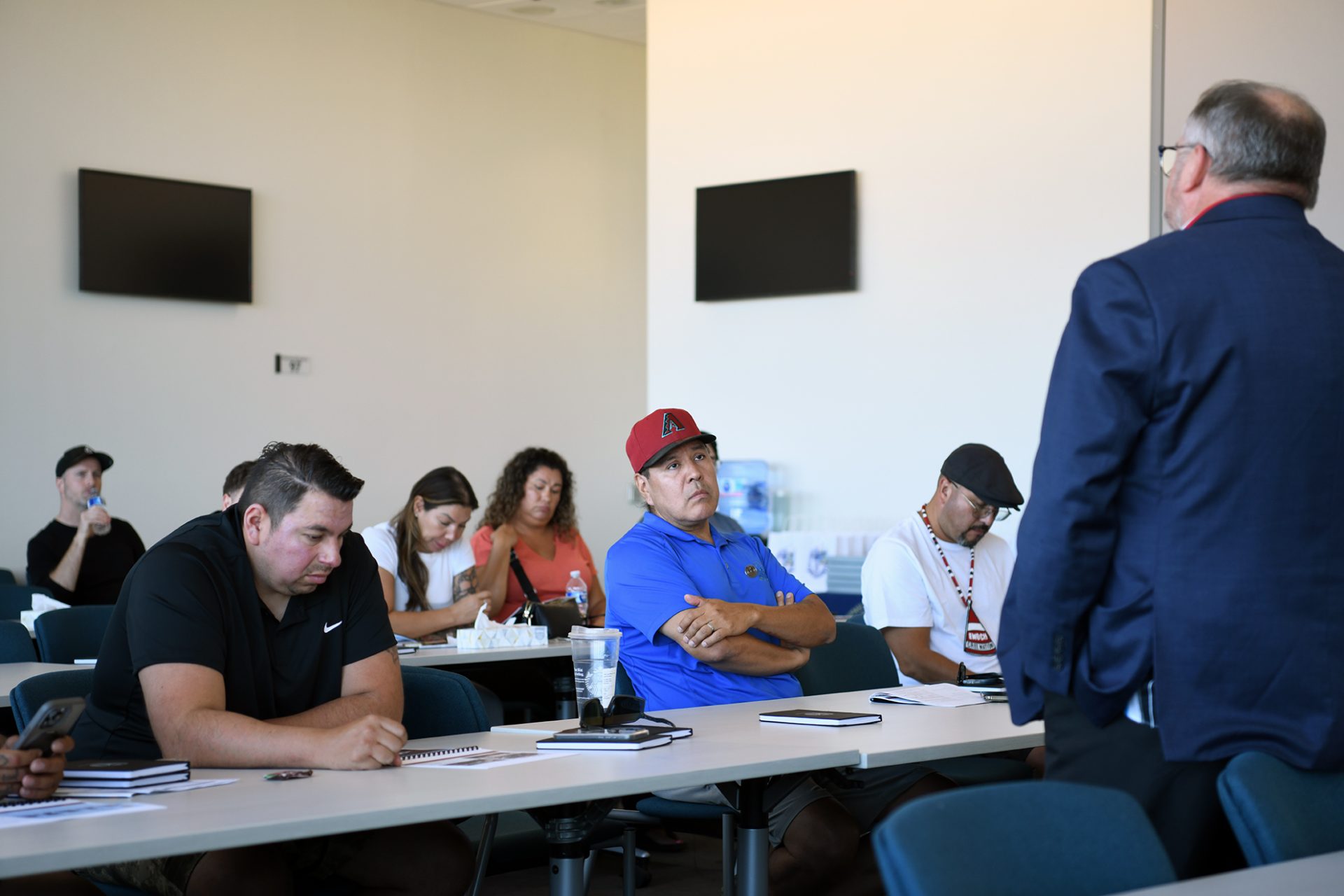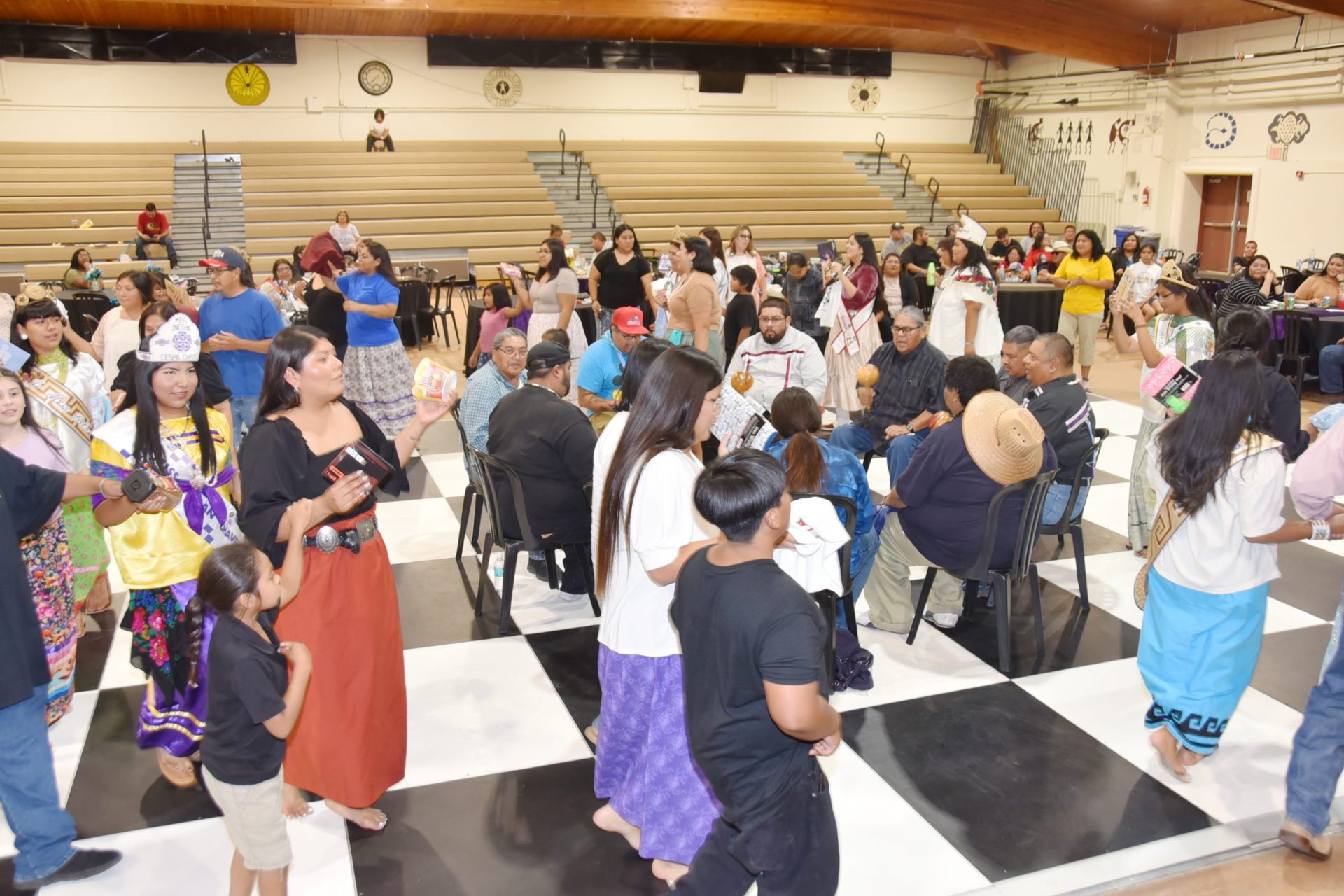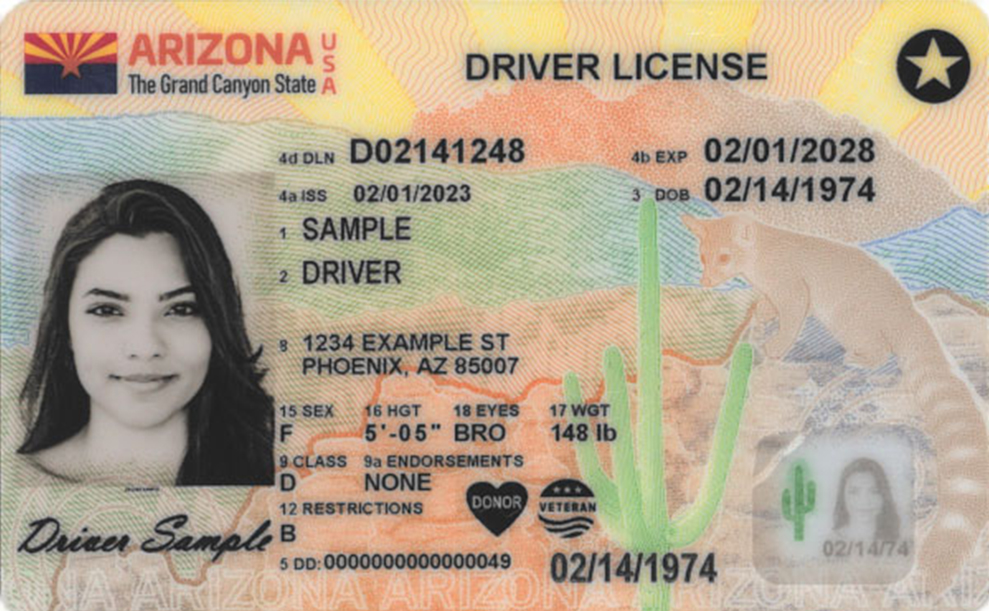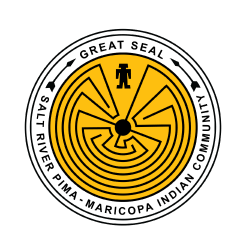VIEWS: 611
October 6, 2025The Enoch Cree Nation Visits the SRPMIC
3 takeaways:
- The Enoch Cree Nation is composed of 2,566 community members and hails from Alberta, Canada, just west of Edmonton.
- Enoch Cree Nation tribal council and department directors met with Salt River Pima-Maricopa Indian Community President Martin Harvier and Community Manager Bryan Meyers to get a better understanding of how the SRPMIC is run and take that information to apply back home.
- The tribe is part of the Plains Cree, one of the largest Indigenous groups in Canada.
Here in the Salt River Pima-Maricopa Indian Community, we set the standard.
For quite some time now, the SRPMIC has been viewed as a leader among tribes in Indian Country. From the many business enterprises that the Community owns and operates to the traditional cultural gatherings that connect neighboring cities with the tribe, the inner workings that make the SRPMIC a wonderful place have reached across the United States and now into Canada as well.
Enter the Enoch Cree Nation from Treaty 6 in Alberta, Canada.
On Sept. 10, Enoch Cree Nation executive directors and managers and Tribal Council members traveled roughly 1,500 miles from their homeland to meet with executive staff of the SRPMIC, including President Martin Harvier and Community Manager Bryan Meyers.
The group traveled around the Community by shuttle throughout the day, with SRPMIC Public Information Officer Blessing McAnlis-Vasquez answering questions as they came up. On the first leg of their tour, the group left from the Talking Stick Resort and Casino and traveled to the SRPMIC Justice Complex.
Exiting the shuttle in the Justice Complex parking lot, the group noticed the Council Chambers across the street. So they asked McAnlis-Vasquez for an impromptu tour of the building, stating how impressed they were.
Inside the jury assembly room in the Justice Complex, Harvier presented a snapshot history of the SRPMIC to the group. The Enoch Cree Nation members asked him about the resources available to Community members, such as the sober living homes, how the tribal government operates, the origins of the day labor program and more. Additionally, Harvier provided a brief history of the SRPMIC.
“We don’t get much money from the government,” said Chief Cody Thomas of the Enoch Cree Nation. “We do receive money from grants, but not much.”
During the meeting, Thomas revealed that the Enoch Cree Nation does not charge its members for water because the nation has an agreement with the city of Edmonton, Alberta.
Later, the group was provided with a tour of the Justice Center courtrooms and interrogation rooms.
SRPMIC Operations Highlighted
Following the tour of the courtrooms, Meyers answered questions from the group. During his welcome, Meyers introduced himself in O’odham and Piipaash.
He then detailed the SRPMIC elections and education system, as well as the frequency of Council meetings held throughout the Community, the business enterprises that the SRPMIC owns, and how the enterprise board members and CEOs work in tandem with the Community.
The representatives of the Enoch Cree Nation shared one of their biggest concerns back home, which is how to correctly establish and maintain their information technology (IT) systems.
The tribe has been working with outdated computers and software for a long time. After many internal discussions, the nation upgraded its IT systems. However, in doing so, the new system became vulnerable and unfortunately was the target of hackers.
That would not have happened with the old computer equipment.
“We’ve got a mountain of people in IT,” said Meyers. “For your 2,500-plus-member organization, you would probably need about 120 IT staff,” he recommended.
The guests’ visit wrapped up with lunch and a gift bag containing their very own shells and an important piece of SRPMIC: tepary beans from Ramona Farms.
“This is like gold here in the Community,” revealed McAnlis-Vasquez with a smile. The guests then began discussing the different recipes back home that could utilize the beans.
The group then returned to Talking Stick Resort and Casino to conduct a virtual meeting with selected tribal members back in Alberta. They consistently thanked the SRPMIC for taking the time to detail for them the inner workings of the Community.
The group promised to return to the SRPMIC soon. They went home to begin preparing for their upcoming cold winter months, when the temperature barely reaches 30 degrees during the day and gets down to a low of -3 degrees at night.
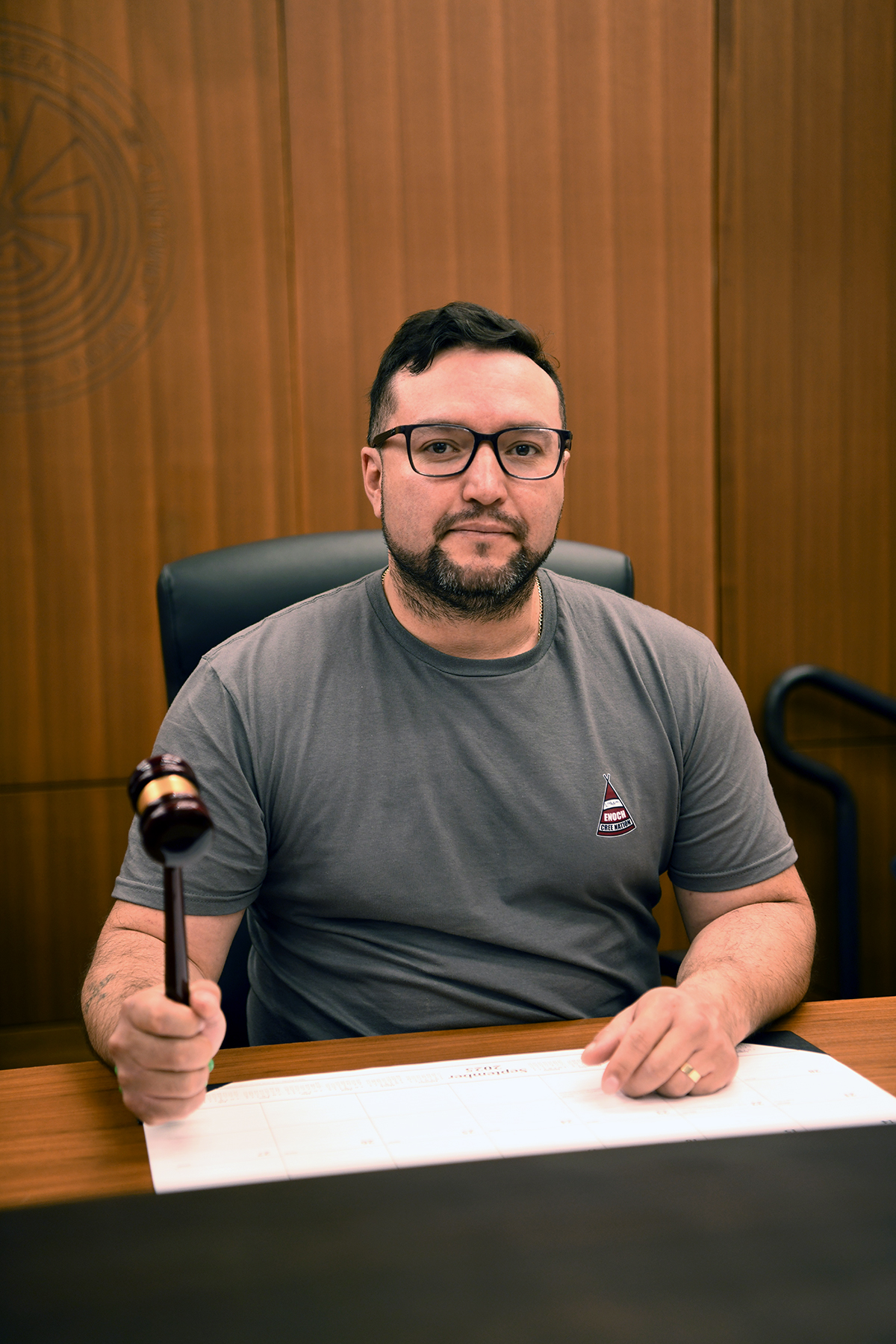
Salt River Pima-Maricopa Indian Community for taking the
time to provide a tour of the Community to his group.

